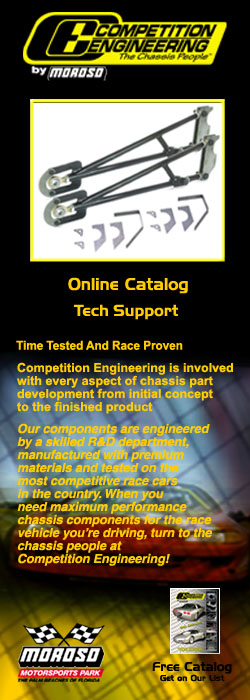|
|
|
||||||
|
|
|
||||||
 |
| Mopar's Mark Osborne recently became the first NHRA Pro Stock driver to go more than 204 mph. |
Time spent waiting in the staging lanes before making a pass is not wasted, Osborne claims, since he carefully watches competitors to see what kind of numbers he'll need to qualify or gain lane choice in the next elimination round. He waits until about there's only three pairs of cars ahead of him before climbing into his Dodge. It's all part of a well-defined ritual.
"I have this deal where I always put my seatbelts on left to right," the Abingdon, VA-based driver reveals. "I put the bottom crotch strap on first, then the bottom and top straps left to right; it's just the sequence I like to do. Then I put my earplugs in, slide my helmet down over my head, put my left glove on first, then my right glove, and then I put my neck roll on. Finally, one of our guys hooks up my radio, and we do a radio check to make sure we're all there."
Before the car is started, Osborne says he always tests how far his body can move forward in the belts. "I like them tight, but not too tight; I just like them snug and I've wrecked twice and survived it, thank the Lord, so I guess that's a happy medium."
To start the car, Osborne says he cranks the engine without the ignition or fuel pumps turned on. "We do it that way to make sure it's not flooded and so the timing doesn't bog the motor down before I hit the ignition and it'll fire instantly."
Next up is the burnout, but there's a lot more to it than just nailing the gas and spinning the tires, he says. He pulls into the burnout box in low gear "and my crew chief motions me into the center of the water--not the back of the water, and not the front of it--right in the center," he stresses.
"Then I put the clutch in and put the car into third gear, hold the line-lock button with my left thumb, pump the brake pressure up to 1,100 pounds--I've got a gauge in there to show the pressure--and then the co-starter (NHRA official) will wave his hands telling me it's okay to start the burnout.
"So I'll rev the motor up--I always like to give it two
good clean-outs up to about 6,000 rpm--then I bring it up to about 8,000
and drop the clutch on it. I make a fourth-gear change, give it a little
bit more throttle, go fifth gear, give it a little more throttle, and
when I feel it spinning the tires pretty good I let off the line lock.
It starts going then and when you feel the tires start grabbing the
pavement, you have to feed it more throttle to keep the rpms up. You've
got to keep the rpms up to a certain amount or it'll bog the tire down
and run through the clutch and destroy the whole run."
|
Copyright 1999-2001, Drag Racing Online and Racing Net Source



